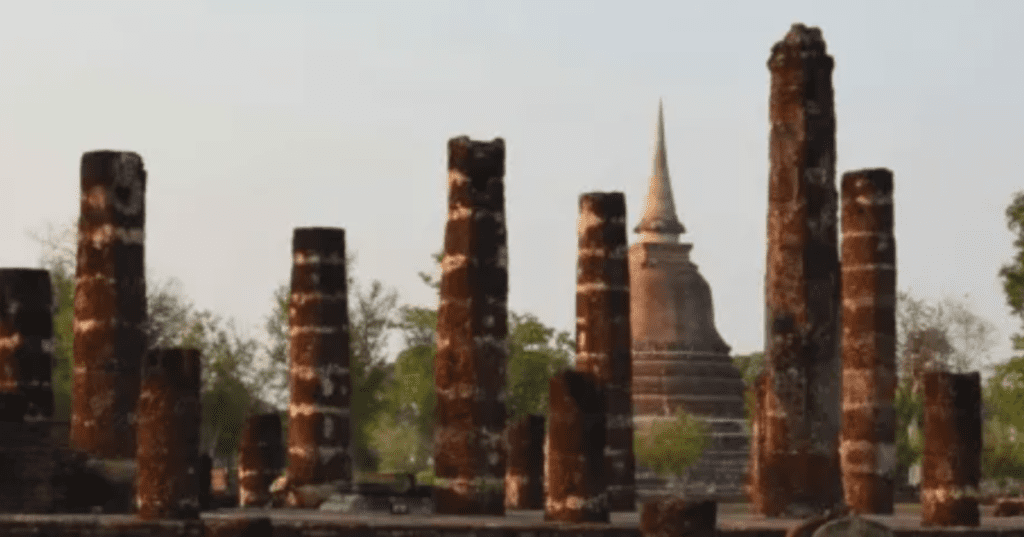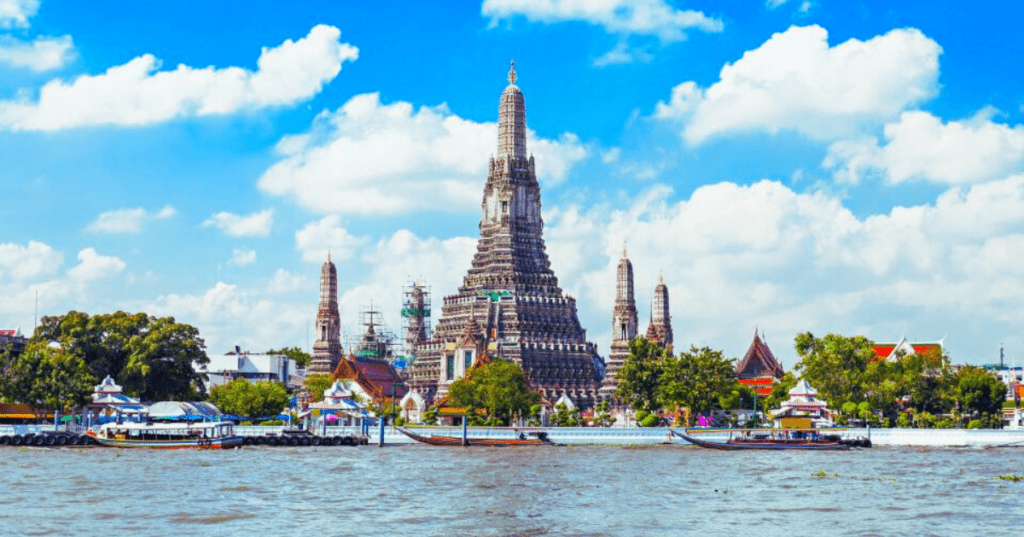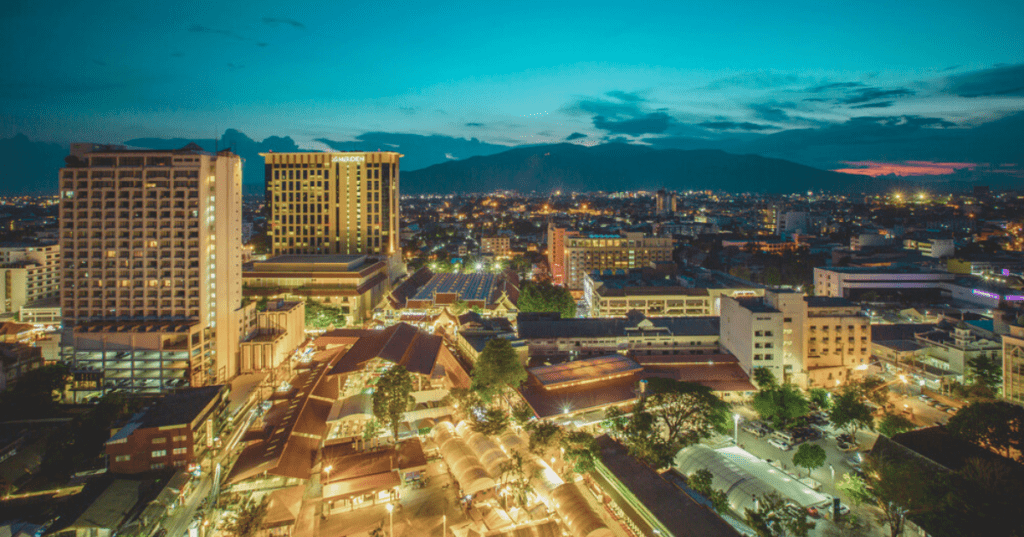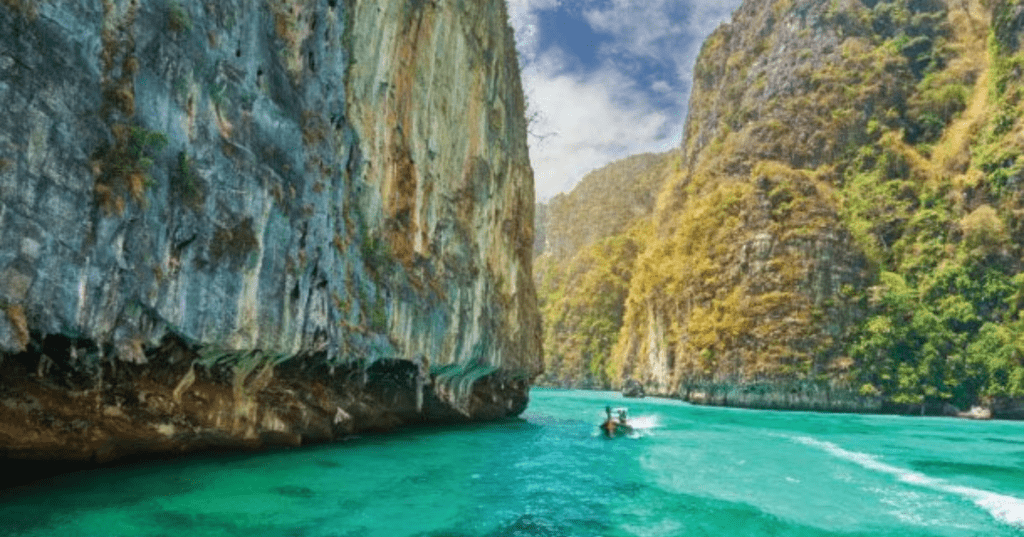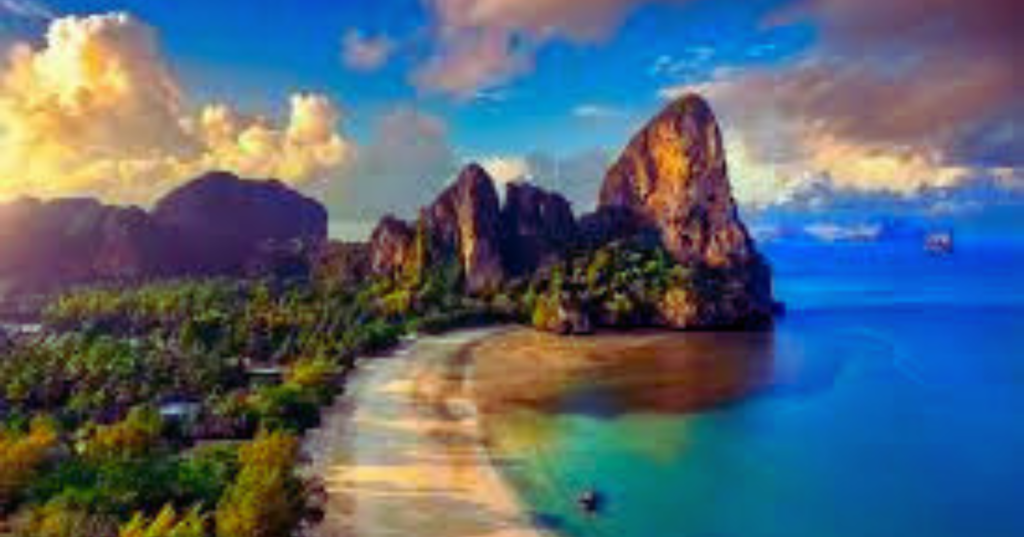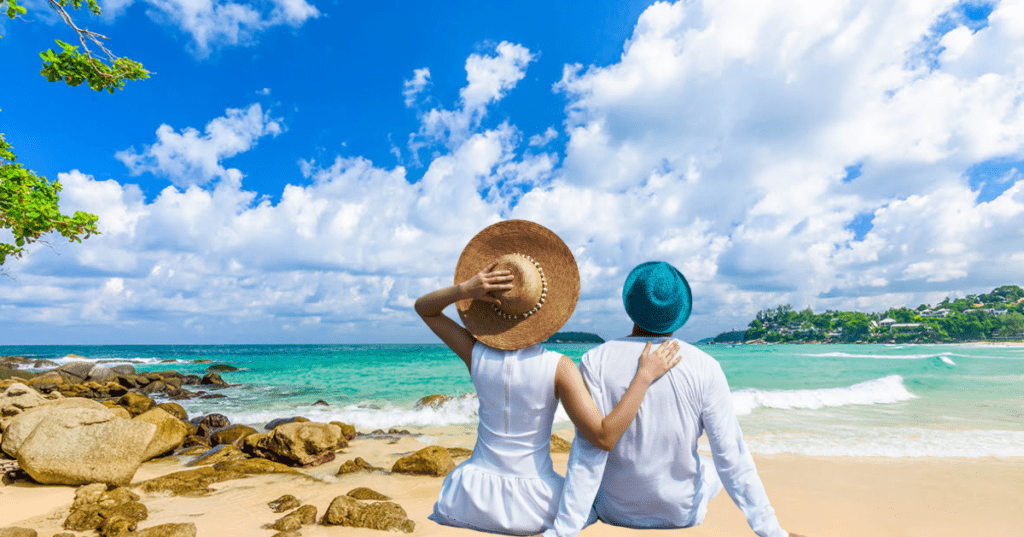The first capital of Thailand, Sukhothai, is known as the birthplace of Thai civilization. If you like to experience history, culture, or a unique trip, Sukhothai is recommended to be a must-visit. Sukhothai was the capital of the first Thai kingdom in the 13th century. The city will attract you with its pack of ancient temples, historic ruins, and a rich cultural heritage. This historic park includes well-preserved ruins and artifacts from the area’s glorious past that are now a part of the UNESCO World Heritage Site.
This blog post will help you explore Sukhothai’s treasures, ensuring you have a fulfilling and memorable experience. When you visit Sukhothai, you will be stepping into the roots of Thai culture and history.
Brief History of Sukhothai

Sukhothai, meaning “Dawn of Happiness,” was the first capital of Thailand. It was founded in the 13th century and marked the beginning of the Thai nation. The kingdom was established in 1238 by King Si Inthrathit, who is considered the father of the Thai nation.
During its peak, Sukhothai was a thriving center of politics, culture, and religion. The kingdom is known for its advancements in art, architecture, and language. King Ramkhamhaeng, the third ruler, is credited with creating the Thai alphabet, which is still in use today. Under his rule, Sukhothai expanded its territory and influence, becoming a significant power in Southeast Asia.
The Sukhothai period is often seen as a golden age in Thai history. The city was known for its beautiful temples, intricate sculptures, and the famous Sukhothai style of Buddha images, which are characterized by their elegant and serene appearance.
However, the glory of Sukhothai was short-lived. By the late 14th century, the kingdom began to decline and eventually became a vassal state of the Ayutthaya Kingdom. Despite this, the cultural and historical impact of Sukhothai remains significant, with its legacy continuing to influence Thai culture and identity today.
Visiting Sukhothai today, you can explore the Sukhothai Historical Park, where many of the ancient structures and temples have been preserved. This park offers a glimpse into the kingdom’s illustrious past and its contributions to Thai heritage.
How do I get from Bangkok to Sukhothai?
If you’re heading to Sukhothai, you’ll likely pass through Bangkok first. Here are your three main options:
By Bus: The Affordable Way
You Can opt for the bus from Mo Chit, Bangkok’s North Terminal, and spend a mere 400 baht (about 10€) for the 7-hour ride. The bonus? Scenic stops in Ayutthaya, Lopburi, and Phitsanulok along the way. If you’re like me, you’ll appreciate the flexibility to explore these hidden gems.
By Train: A Comfortable Ride
Though Sukhothai isn’t directly connected by train, you can take a leisurely ride from Bangkok to Phitsanulok (5-7 hours) and then hop on a bus to your final destination (just 40 Thb). Train prices vary, but the range of 150 to 800 Thb offers something for every budget. I found the train journey to be a highlight – the scenery whizzing by, the gentle rocking motion… pure bliss!
By Air: For Those in a Rush
If time is of the essence, flying might be your best bet. Bangkok Airways, for instance, offers flights starting at 50€ one-way. However, factor in the trek to the airport, and you might find the experience less captivating than the train or bus ride.
The Temples You Need to See in Sukhothai Historical Park
Sukhothai Historical Park is a captivating place filled with ancient temples and ruins that offer a glimpse into Thailand’s rich past. Here’s a guide to the essential temples you should visit in the North Zone of the park.
The North Zone

Ta Pha Daeng Shrine
The Ta Pha Daeng Shrine has a fascinating history! It all began as a Hindu shrine back when Sukhothai was a vassal state of the Khmer Empire. You’ll find beautifully crafted statues at the shrine, made in the distinctive ‘Angkor Wat’ style of Khmer sculpture, which gives us a peek into the early religious influences of the region.
Wat Mae Chon
There’s not a lot of info out there about Wat Mae Chon, but the coolest thing about it is the giant Buddha image sitting on top of the ancient vihara. It’s such a peaceful and beautiful spot that you should check out as you head north.
Wat Sorasak
Check out the cool 14th-century Wat Sorasak, it has a unique bell-shaped chedi made of brick and 24 stucco elephant figures. After that, take your time to visit other chill temples in the area, like Wat Traphang Pan and Wat Traphang So.
Wat Traphang So, located on its little island, has a charming, albeit ruined, appearance. Next, visit Wat Phra Pai Luang, which requires a ‘North Zone’ ticket for 100 baht.
Wat Phra Pai Luang
Wat Phra Pai Luang is one of the oldest temples in Sukhothai, dating back to the Khmer period. It may have been built during the reign of Jayavarman VII, known for constructing many of Angkor’s great temples. Initially a Hindu temple dedicated to Vishnu, it was later converted to a Theravada Buddhist temple.
There are only three original Khmer-style prangs left, as well as ruins of several chedis and a vihara. The temple complex is large and surrounded by a moat. There are influences from the ancient kingdom of Haripunchai as well as from the Ayutthaya period in these structures.
Wat Si Chum
Despite being further from Wat Phra Pai Luang, Wat Si Chum remains in the North Zone and is one of the most iconic Sukhothai landmarks. You will need your ticket for the North Zone again. Phra Achana Buddha is a massive statue of brick and stucco that stands 15 meters tall and 11 meters wide. Originally built in the 1950s, this impressive statue was restored in the 1970s.
King Naresuan is said to have used the mondop’s sound effects to address his troops, giving them the impression that the Buddha was speaking.
The West Zone
The less-visited West Zone of Sukhothai Historical Park has fascinating temples showcasing rich history and diverse architecture. It’s a serene place to explore ancient ruins, set against lush hills.
Wat Saphan Hin
One of the most remarkable temples in the West Zone is Wat Saphan Hin. To reach the temple, you’ll have to walk up a stone pathway, which gives the temple its name, which means “Stone Bridge Temple.” It stands on a hilltop, offering breathtaking views of the surrounding landscape.
The biggest attraction of Wat Saphan Hin is the standing Buddha image, Phra Attharot, which stands at about 12.5 meters tall. This incredible statue, overlooking the plains below, was created to evoke a sense of awe and respect. The hike to Wat Saphan Hin is worth it for the amazing views and the peaceful atmosphere that fills the area.
Wat Chang Rop
Nestled in the forested area of the West Zone, Wat Chang Rop is another significant temple. Its name translates to “Temple Surrounded by Elephants,” and it’s easy to see why. The base of the temple’s main chedi is encircled by 24 elephant statues, which symbolize strength and protection. Though many of the statues are now in ruins, they still convey a sense of the temple’s original grandeur.
The large bell-shaped chedi at Wat Chang Rop is reminiscent of the architecture found throughout Sukhothai, blending influences from both the Sukhothai and Ayutthaya periods. The serene forest setting adds a mystical charm to this historical site.
Wat Phra Bat Noi
Wat Phra Bat Noi, though smaller and less known, is an intriguing temple located in the West Zone. It is named after the Buddha’s footprint, which is believed to be enshrined here. This temple provides a more intimate and peaceful exploration experience, away from the more crowded sites.
Wat Chedi Ngam
Another notable temple in the West Zone is Wat Chedi Ngam. This temple is unique for its beautiful chedi and serene atmosphere. The chedi here is adorned with intricate stucco work, which, despite being weathered, still showcases the craftsmanship of the Sukhothai period.
The surrounding forest provides a tranquil setting, making Wat Chedi Ngam a perfect spot for reflection and quiet exploration. This temple, like many in the West Zone, is often overlooked, offering a more private and contemplative experience.
The South Zone
The South Zone of Sukhothai Historical Park is less visited compared to other zones, but it holds several unique and significant temples that offer a deeper insight into the historical and religious heritage of Sukhothai. Exploring this area allows you to experience a quieter side of the park, surrounded by serene landscapes and fewer crowds.
Wat Chetuphon
Wat Chetuphon is one of the most impressive temples in the South Zone. Known for its unique architectural style, the temple features a large mandapa, or sanctuary, housing four standing Buddha images facing different directions. These images are crafted in the distinctive Sukhothai style, exuding a sense of peace and grace.
The mandapa at Wat Chetuphon is notable for its intricate stucco decorations, which depict various religious and mythological scenes. Despite the weathering of time, these details still showcase the artistry and craftsmanship of the Sukhothai period. The temple’s design reflects the harmonious blend of Theravada Buddhist influences and local artistic traditions.
Wat Ton Chan
Wat Ton Chan is a lesser-known but fascinating temple in the South Zone. This temple is named after the ton chan tree, which is found in the vicinity. The temple complex includes a viharn (assembly hall) and several chedis. While not as grand as some of the central temples, Wat Ton Chan offers a peaceful and contemplative atmosphere.
One of the highlights of Wat Ton Chan is its main chedi, which features beautiful stucco reliefs and intricate carvings. These artistic elements provide a glimpse into the religious and cultural life of the Sukhothai era. The temple’s quiet location makes it an ideal spot for reflection and exploration.
Wat Chedi Si Hong
Wat Chedi Si Hong is another important temple in the South Zone. This temple is known for its large bell-shaped chedi, which is surrounded by smaller stupas and remnants of ancient structures. The chedi is adorned with stucco decorations that depict scenes from Buddhist cosmology and local folklore.
The temple grounds at Wat Chedi Si Hong are expansive, allowing visitors to wander and discover various ruins and artifacts. The serene environment and historical significance of the site make it a worthwhile visit for those interested in Sukhothai’s rich heritage.
Wat Taksin Maharat
Wat Taksin Maharat, located towards the southern end of the park, is dedicated to King Taksin, who played a crucial role in Thai history during the 18th century. Although this temple was built after the Sukhothai period, it provides an interesting connection between different eras of Thai history.
The temple complex includes a large viharn and several smaller structures, each with unique architectural features. The site is surrounded by lush greenery, adding to its tranquil ambiance. Visiting Wat Taksin Maharat offers a broader perspective on the continuity and evolution of Thai religious and cultural practices.
The East Zone
The East Zone of Sukhothai Historical Park is another fascinating area that offers a mix of well-preserved temples and ancient ruins. This zone, like the others, provides a deeper understanding of the Sukhothai Kingdom’s architectural and cultural legacy. Here’s a guide to some of the key temples you should visit in the East Zone.
Wat Chang Lom
Wat Chang Lom, meaning “Temple Surrounded by Elephants,” is one of the most striking temples in the East Zone. The central chedi is encircled by a series of elephant statues, symbolizing strength and protection. Although many of these statues are now in various states of decay, they still offer a glimpse into the grandeur of the temple’s original design.
The chedi itself is bell-shaped and reminiscent of the Sri Lankan style, reflecting the international influences that shaped Sukhothai’s architecture. The serene atmosphere and the impressive scale of Wat Chang Lom make it a highlight of the East Zone.
Wat Traphang Thong Lang
Wat Traphang Thong Lang is known for its detailed stucco reliefs depicting scenes from the life of Buddha. These intricate carvings are located on the base of the temple’s central chedi and are some of the best examples of Sukhothai art. The reliefs portray various jatakas, or stories of the Buddha’s previous lives, and showcase the skill of the artisans of that period.
The temple is situated near a large reservoir, adding to its peaceful and picturesque setting. This location provides a tranquil environment for visitors to appreciate the historical and artistic significance of the site.
Wat Phaya Dam
Wat Phaya Dam is a lesser-known but intriguing temple in the East Zone. It features a large viharn and a chedi with distinctive Sukhothai-style decorations. The temple complex is relatively quiet, offering a serene environment for exploration and reflection.
The highlight of Wat Phaya Dam is its main chedi, adorned with stucco reliefs and intricate carvings that depict various religious motifs. Despite its understated presence, the temple provides valuable insights into the religious and cultural practices of the Sukhothai era.
Wat Phra Yuen
Wat Phra Yuen is a cool temple in the East Zone with a unique design and loads of historical significance. You’ll find a big viharn, lots of chedis, and some really old structures when you visit. The name “Phra Yuen” comes from the standing Buddha images that were once housed here.
The temple grounds are super spacious, so you can take your time wandering around and checking out all the cool ruins and artifacts. It’s such a peaceful place, and if you’re interested in Sukhothai’s heritage, it’s worth a visit!
Final Words
Sukhothai is an amazing place to visit with its rich history, culture, and beautiful surroundings. You can explore ancient ruins, enjoy the local night market, bike around old temples, learn to cook Thai dishes, or just relax at a spa. Remember to plan these activities for your trip to have a great time and create wonderful memories. Have a safe trip!
FAQs About Visiting Sukhothai
1. What is the best time to visit Sukhothai?
The best time to visit Sukhothai is during the cool season from November to February. The weather is pleasant, making it ideal for exploring the historical park and other outdoor activities.
2. How do I get to Sukhothai from Bangkok?
You can get to Sukhothai from Bangkok by bus, train (via Phitsanulok), flight, or car. Each option has its advantages, such as cost, travel time, and convenience.
3. How many days should I spend in Sukhothai?
A stay of 2 to 3 days is recommended to fully explore Sukhothai Historical Park, visit nearby attractions, and enjoy some local activities.
4. What are the must-see temples in Sukhothai Historical Park?
Must-see temples include Wat Mahathat, Wat Si Chum, Wat Sa Si, Wat Saphan Hin, and Wat Phra Phai Luang. Each offers unique historical and architectural insights.
5. Can I rent a bicycle to explore Sukhothai Historical Park?
Yes, bicycles are available for rent at the entrance of Sukhothai Historical Park. Cycling is a popular and convenient way to explore the extensive park grounds.
6. Are there any good places to eat in Sukhothai?
Yes, Sukhothai has many local restaurants and street food vendors, especially around the night market. Try local specialties like Sukhothai noodles and other Thai dishes.
7. What should I wear when visiting the temples?
Wear comfortable, modest clothing that covers your shoulders and knees. Comfortable shoes are also recommended as you’ll be doing a lot of walking.
8. Is Sukhothai suitable for families with children?
Yes, Sukhothai is family-friendly. The historical park offers open spaces for children to explore, and the town has various amenities and activities suitable for families.
9. Are there guided tours available in Sukhothai?
Yes, guided tours are available and can enhance your understanding of the historical significance of the sites. You can book tours through local agencies or your hotel.
10. What other attractions are near Sukhothai?
Nearby attractions include Si Satchanalai Historical Park and the Ramkhamhaeng National Museum. Both are worth visiting for a deeper insight into the region’s history.
11. Do I need to book accommodation in advance?
It’s advisable to book your accommodation in advance, especially during peak travel seasons. Sukhothai offers a range of options, from budget guesthouses to mid-range hotels.

